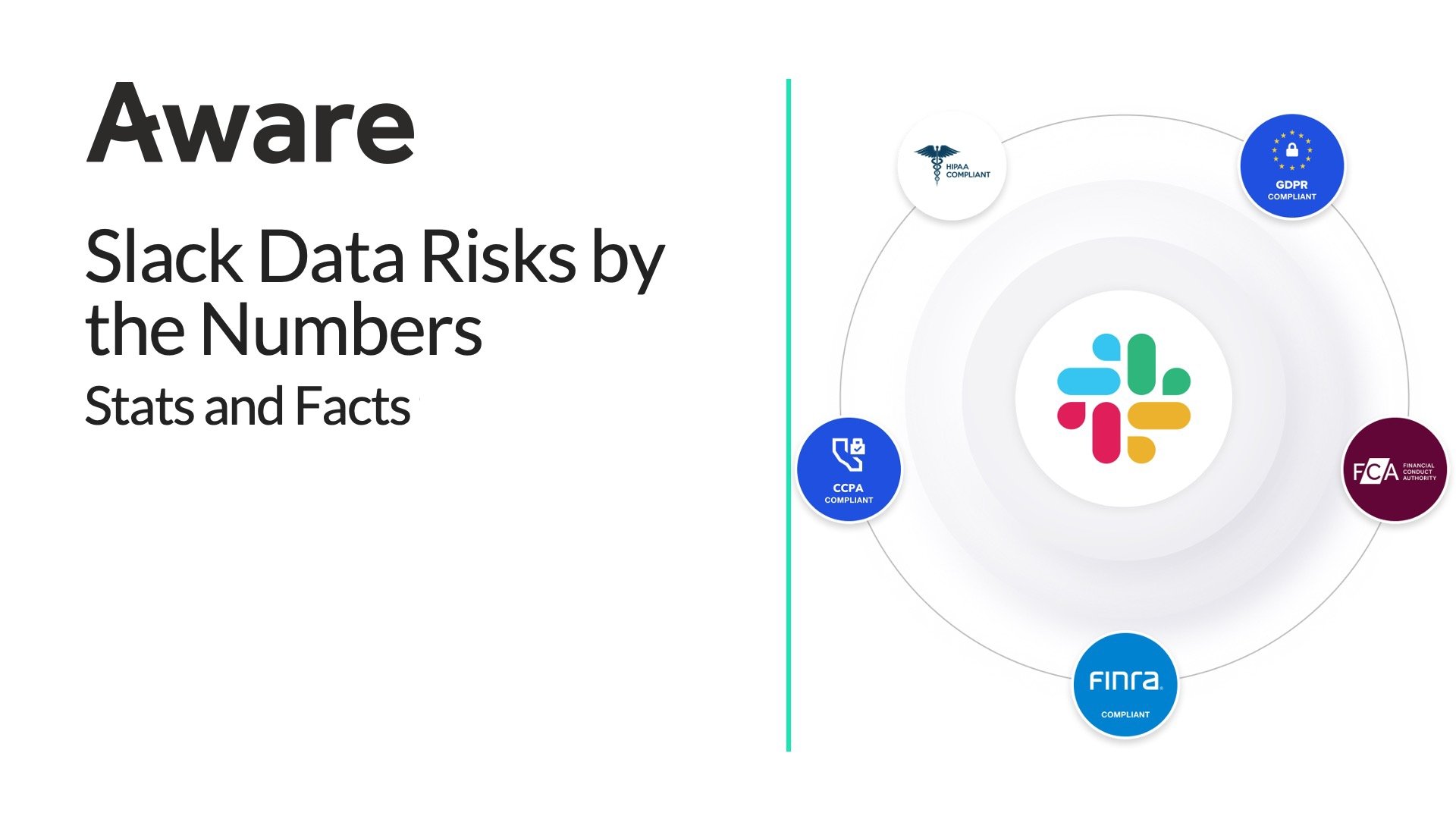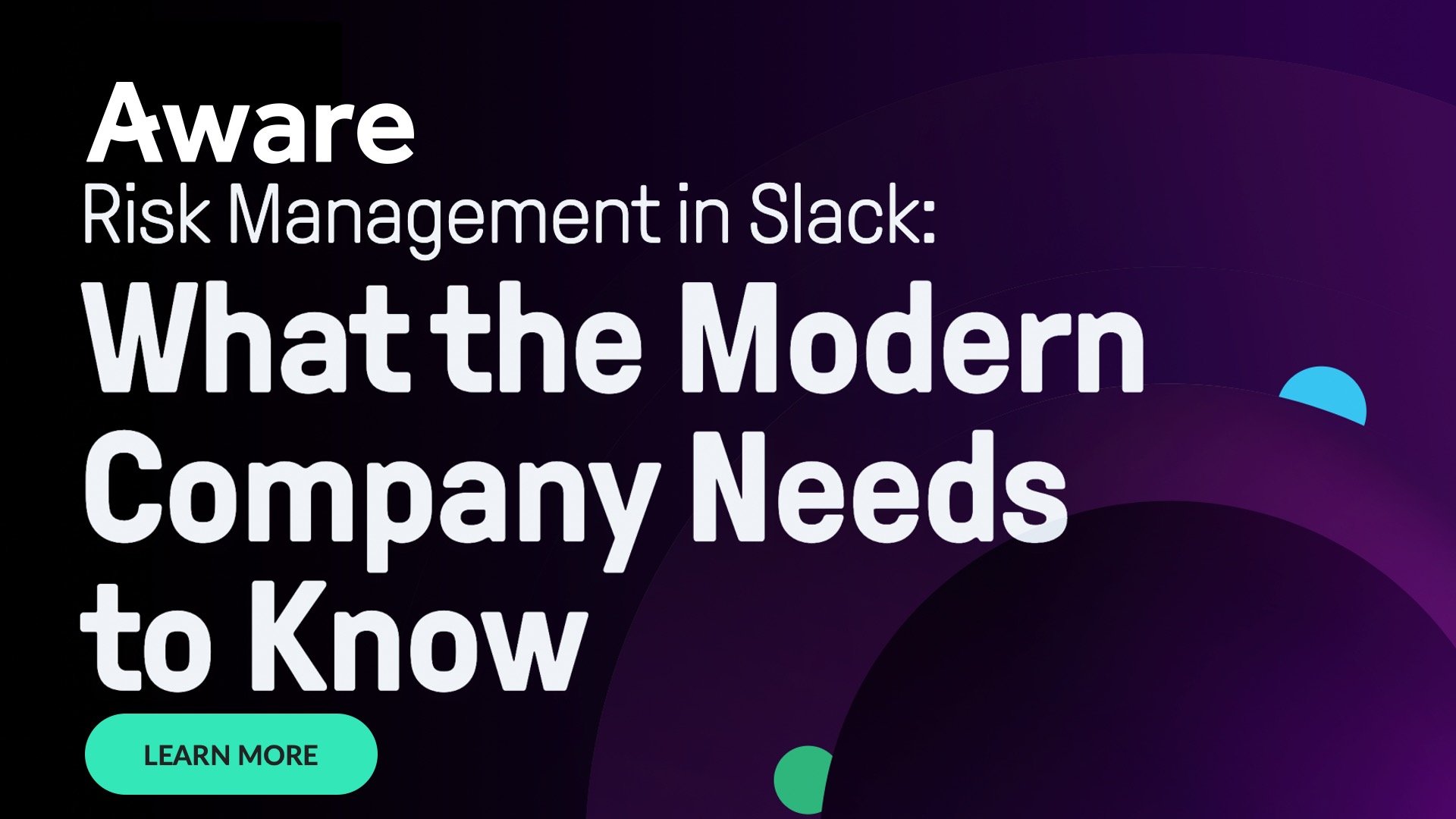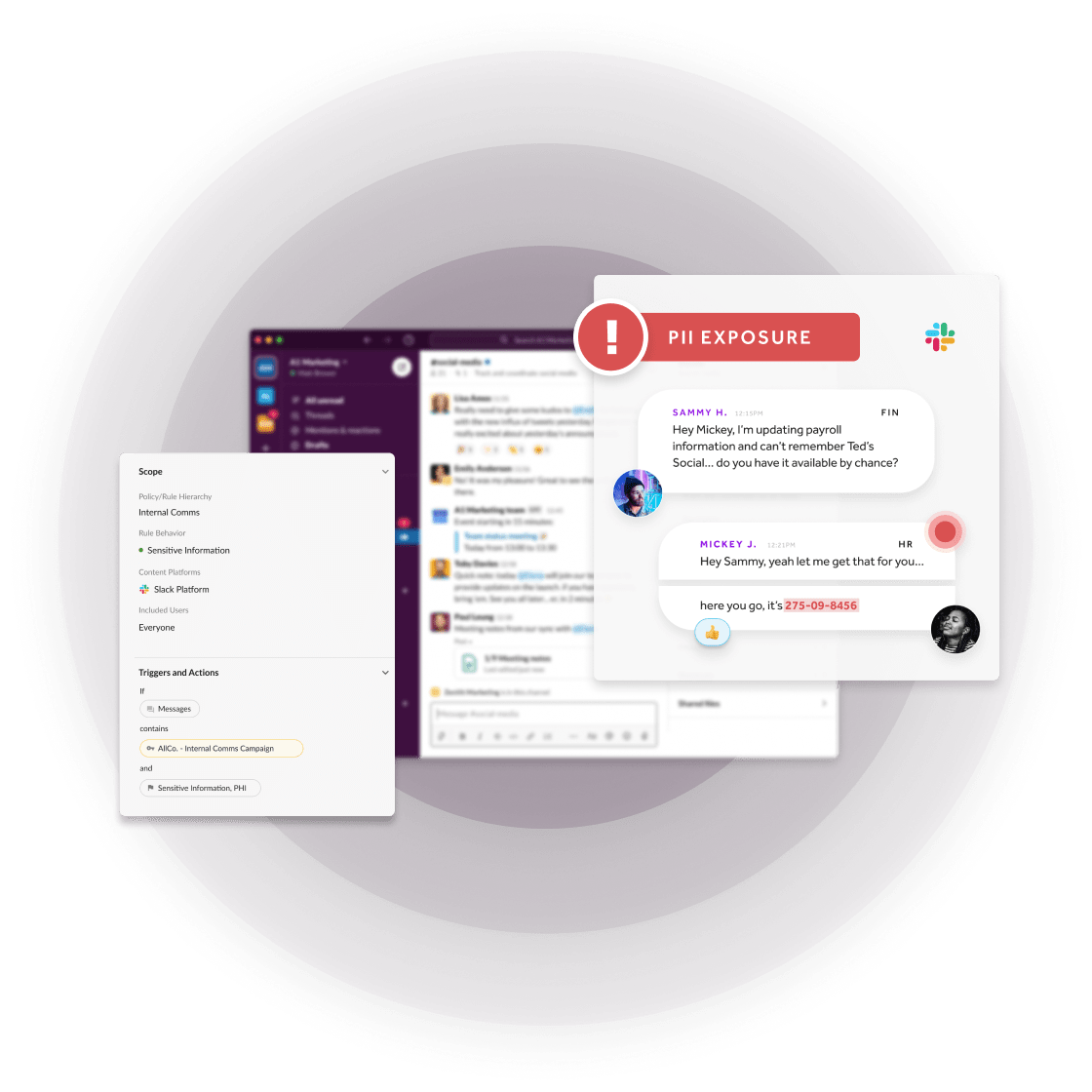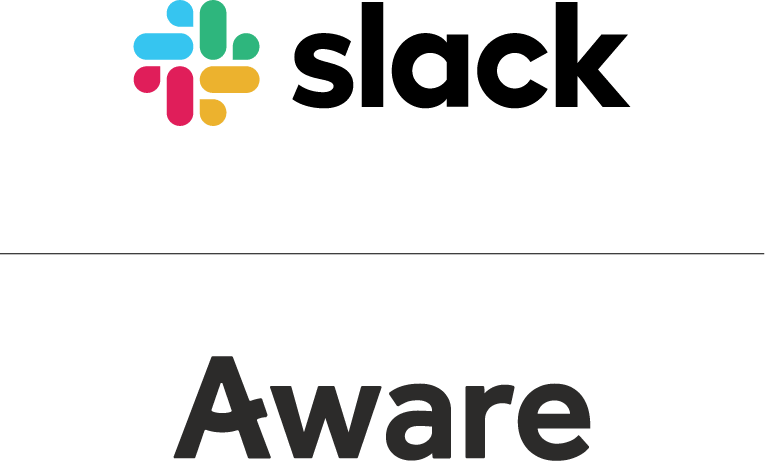Does Slack Protect Data? A Guide to Slack Privacy Concerns
by Aware
Slack is an integral part of many modern workplaces offering a dynamic platform for teams to collaborate and share information. However, Slack’s convenience cannot come at the expense of privacy and security. This blog post reviews Slack's security measures, explores potential privacy risks, and offers tips for navigating this collaborative landscape safely.

What risks live in Slack? We analyzed 6.6 billion messages to find out.
Contents
- How secure is Slack?
- Top Slack privacy concerns
- How Slack approaches data privacy
- Slack privacy and security FAQ
- How to improve security in Slack
- Protect and secure your Slack data with Aware
How secure is Slack?
Slack is a popular SaaS collaboration tool that offers channels for organized discussions, direct messaging for private conversations, and integrations with various third-party applications to enhance productivity. These tools foster innovation and productivity, but also introduce inherent risks. Sensitive information gets shared, confidential discussions take place, and the lines between internal and external communication can blur.
In seconds, sensitive data and confidential information can be compromised—everything from payroll records to customer lists and financial reports. This is where "collaboration risk" comes in—the increased potential for unauthorized users to gain access to restricted information, leading to data breaches and the misuse of information within a collaborative environment.

Secure your Slack workspace now with this free guide.
Top Slack privacy concerns
While Slack does offer some measures to protect the data contained within its workspace, it is far from risk-free. Top Slack privacy concerns include:
Lack of end-to-end encryption
Slack encrypts data in transit and at rest using TLS 1.2 protocols, AES256 encryption, FIPS 140-2 compliant encryption, and SHA2 signatures where supported. However, Slack does not offer end-to-end encryption, meaning messages could be intercepted by hackers. To mitigate this risk, Slack offers bring your own key (BYOK) functionality, giving enterprises enhanced control over their data encryption.
Third-party integration vulnerabilities
Slack offers over 2600 apps and integrations that can connect natively to Slack. These include workflow and productive enhancement tools, cybersecurity enhancements, games, and bots. Any one of these tools, connected to a workplace Slack instance, could potentially open a back door for malware through which data can be improperly accessed or exfiltrated.
Searchable and exportable message histories
By default, Slack retains all data indefinitely for paid plans, and for a year for free plans. Depending on your Slack plan, any employee is able to search Slack for messages going back months or even years and export whatever data they find. Just 100 employees will send over 400,000 messages per year, creating a massive data set potentially filled with confidential and proprietary information.
Read more: How to export Slack conversations
Data sharing with advertisers
Slack advises that it does share some identifiable data with advertisers for use. Some of the data that Slack collects includes user identifiers and contact information, financial information, geolocation, network activity and more. This may present additional risks that Slack account owners should consider.
Blind spots and limited data controls
Slack offers users several different ways to collaborate, including within public and private channels or direct messages. Each method comes with different visibility settings, ranging from totally private (users DMing themselves) to completely unrestricted (posting messages in public channels). Depending on account level, administrative settings, and third-party data retention tools in use, admins and owners may not have full visibility into all the places where employees talk. Further complicating matters, user accounts also retain the ability to edit or delete their own messages at any point after sending.
Public links to private files
When posting a link to Slack, end users might unintentionally create public links to private files, exposing confidential data to unauthorized individuals. In some cases of legal and regulatory action, this may mean the files themselves may become evidentiary, even if they were never directly uploaded to Slack.
How Slack approaches data privacy
Slack takes user data privacy seriously and has implemented measures to safeguard sensitive information and ensure a secure digital workplace. This includes being transparent about what data is collected about users and how long that data is retained.
In addition, users can manage who has access to their Slack channels and messages using Slack’s built-in security features. Controls such as two-factor authentication (2FA), limiting members to verified domains and/or requiring admin approval for each new user, and deactivating inactive users can all help to restrict data access to employees only.
Admins can further restrict visibility of sensitive data using private channels and group messages to ensure confidential details are only shared on a need-to-know basis and are not widely searchable. Additionally, organizations can enable collaboration with vendors and contractors through Slack Connect to prevent outside users from gaining access to the full Slack workspace.
In tandem with admin settings to ensure privacy and security, Slack offers ways to address and mitigate potential security issues through trusted vendors for data loss prevention (DLP), eDiscovery, insider threat detection and more.
Slack security and compliance certifications include ISO 27001, SOC 2, and FedRAMP Moderate, and Slack supports HIPAA, FINRA, GDPR, and CCPA/CPRA-compliant use.
Slack privacy and security FAQ
What are insider threats in Slack?
Insider threats are Slack users who, through mistake or malice, expose company data to unauthorized access, loss, or exfiltration. Slack provides unique opportunities for insider threats to flourish unseen because of its complex permissions structure and limited visibility into user activity.
Read more: Understanding and tackling Slack insider threats
Is Slack data private?
Slack protects all user-generated data with security and encryption features designed to keep it private. Workspace admins can support these efforts by configuring available security and privacy controls to minimize risk in their Slack instance, deploying third-party security and privacy integrations, and regularly educating employees on how to use Slack safely and securely. Examples of employee education should be how to set secure passwords and keep them safe, spotting phishing and ransomware attacks, and what to do if they suspect a cybersecurity incident has occurred.
How else can I improve security in Slack?
Slack admins can enforce security policies in a number of ways, including establishing multi-factor authentication, creating clear access control policies, limiting guest user access, and using Slack Connect for external collaboration. It’s also important to establish an acceptable use policy for Slack and enforce adherence using continuous compliance monitoring.
Does Slack collect personal data?
Yes, Slack collects some personal data about its users. Examples include usernames, email addresses, and message content required to operate the platform. Slack also collects information about user sessions, cookies, audio and video metadata, network activity and more. Full details are available from Slack’s privacy policy.
How to improve security in Slack
By implementing proactive security measures, organizations can leverage Slack's collaborative benefits while minimizing privacy concerns and security risks. Slack offers many features and integrations that enable workspace admins to reduce information security risks and enhance data protection. However, it is equally important to educate users on their roles and responsibilities in protecting their Slack app instance. This includes:
- Creating acceptable use policies for Slack and training employees on how to follow them
- Establishing guidelines for granting and revoking Slack access during on/offboarding
- Regularly evaluating third-party apps connected to Slack for security and privacy
- Using a solution that can detect security concerns in Slack in real time
Protect and secure your Slack data with Aware
Aware supports data privacy and security in Slack and GovSlack using AI-powered automations to detect data risks as they occur. Aware connects to Slack via native APIs for seamless integration with zero impact on the end user and uses proprietary natural language processing (NLP) to analyze Slack messages in real time. Some of the risks Aware can detect include regulated data (PII/PCI/PHI), intellectual property, code and file sharing, and fluctuations in workplace sentiment and toxicity.
Using Aware, Slack admins can strengthen their privacy posture using powerful federated search that identifies risk with near-human accuracy, increasing security while minimizing false positives. Aware is the only Slack and GovSlack vendor approved for eDiscovery and DLP, enabling users to take granular control of their Slack data, reduce insider risks, and enforce compliance with internal policies and regulatory need. Discover why the world’s leading organizations trust Aware to ensure the security and privacy of their Slack data.










